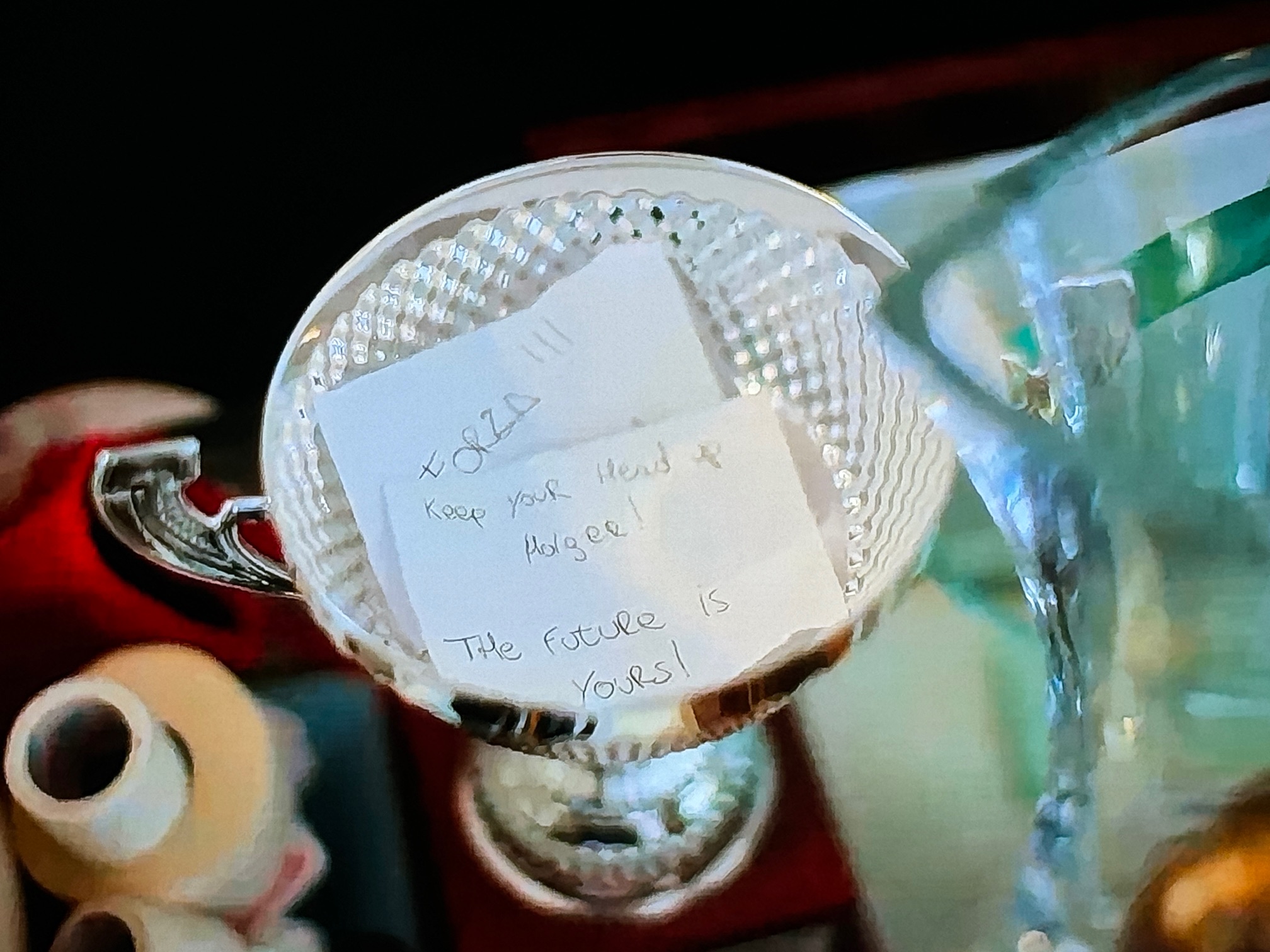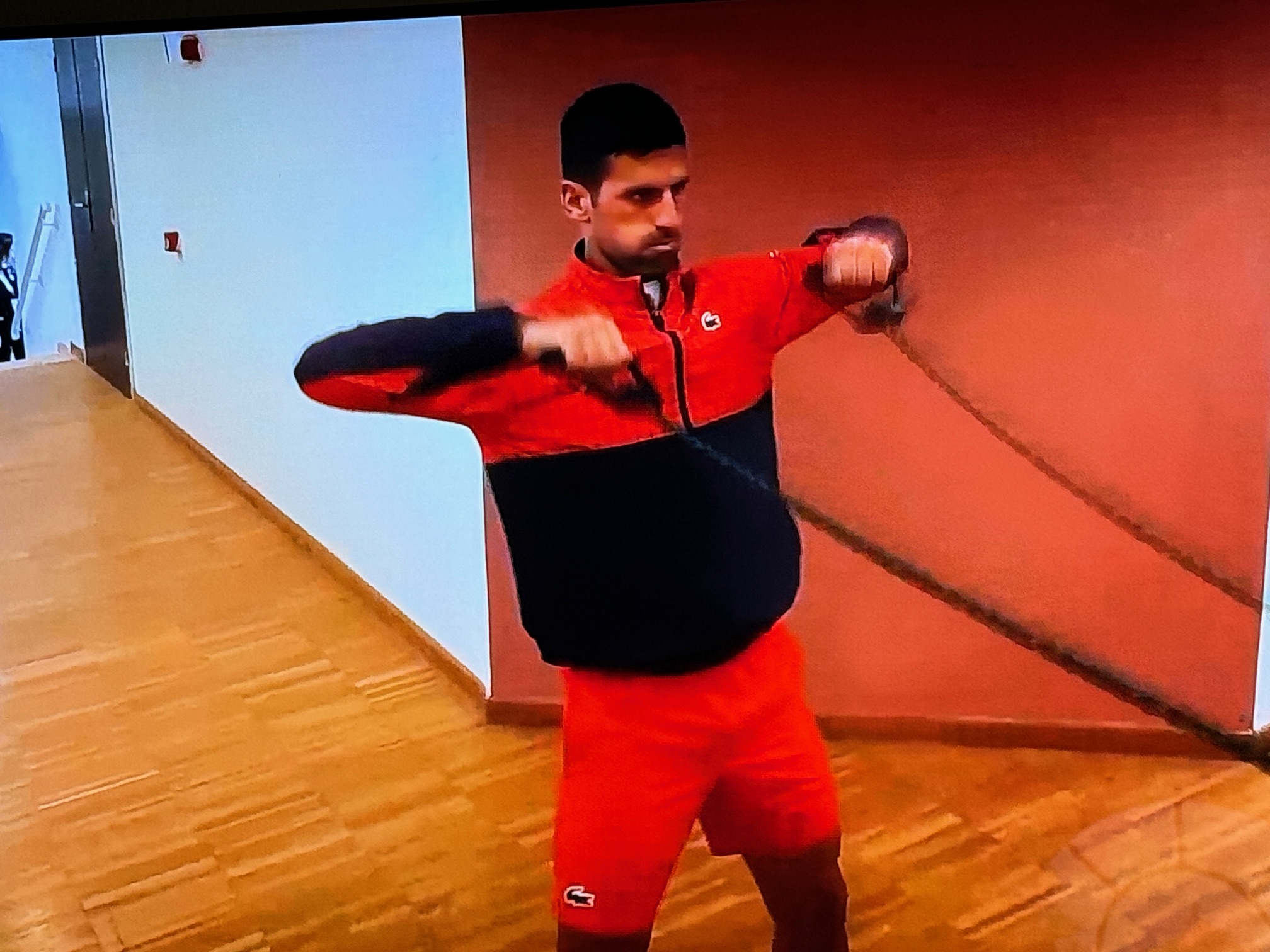Tennis Technology and Training Tuesday
The “Ask the Experts” column in the April Edition of Racquet Sports Industry magazine carried a segment on replacing the bump guards and grommets in a tennis racquet. The reader who sent in the question was lamenting that it can be pretty challenging to find replacement bump guards and grommets for tennis racquets that were fairly recently on the market. It is something that a lot of players never think about until their racquet stringer brings it to their attention.
The bump guard is the strip of plastic that lines the outside edge of the top of the racquet frame. It does exactly what the name suggests it does. It protects the tennis racquet frame from bumps that naturally occur during the course of play. I personally am very hard on my racquet bump guards, as a former wooden racquet player I am comfortable playing very low balls, sometimes scraping my racquet on the court surface. In addition, sometimes I have to use the racquet as a cane when I hobble back into position during competitive play. A worn out bump guard can accelerate the structural failure of the racquet frame.
The grommets are the plastic holes that the separate the strings from the racquet frame. Modern tennis racquets have sharp metallic edges to the holes in the racquet frame. If the string touches the frame directly, breakage is likely at that point of contact. Keeping an eye on the status of the bump guards and grommets is essential to tennis racquet maintenance.
It is also an interesting case study in the economics of the sport. Racquet manufacturers are the vendors of replacement bump guards and grommets for their racquets. However, it is a low cost commodity item that isn’t very profitable to sell. Additionally it is in the racquet manufacturer’s best interest that bump guards and grommets be somewhat of a scarce commodity and hard to find. If a player can’t find the part, then eventually they will be forced to buy another racquet.
On the other hand, as a player if I had been unable to find replacement bump guards and grommets for a late model racquet, I would probably shy away from buying a racquet from that same manufacturer again. However, right now there are supply chain issues impacting the availability of a lot of equipment and supplies for tennis. It might not be the manufacturer’s fault.
When I buy new racquet frames, my personal practice is to immediately buy two replacement sets of bump guards and grommets for each racquet at the same time. Additionally, as long as the frames are in good condition, I try to keep at least one set of replacement bump guards and grommets on hand at all times. I don’t want to get forced into buying new frames under the duress of a short time constraint.
Additionally, I try to take good care of my bump guards and grommets. Part of the reason for that is because I string my own racquets. Additionally, the grommet strips for my current brand of racquets are notoriously tight and hard to position properly in the frame. It is enough of a pain that I generally try to avoid replacement if I can.
One strategy I use is placing a strip of protective tape over the top of my racquet heads. This is not to be confused with lead tape that some people use to change the weight balance of their frames. My personal policy is to buy a racquet with the correct swing weight properties to start with. The protective tape gets pretty chewed up when I play, but it is easy to replace. It definitely protects the bump guards.
On the grommets the key is to be careful with restringing. This is more easily done when you string your own racquets, but another approach is to be picky about stringers and examine the frame for undue wear and tear on the grommet holes after the racquet is freshly strung.
Keeping a close eye on the bump guards and grommets is critical for keeping your tennis racquets in good working condition. While most tennis pro-shops will order bump guards and grommets when needed, I recommend keeping a set on hand to avoid having to wait for potentially backordered replacements.
Fiend At Court participates in the amazon associates program and receives a paid commission on any purchases made via the links in this article. Additional details on the disposition of proceeds from this source are available in the “About Fiend at Court” page.





